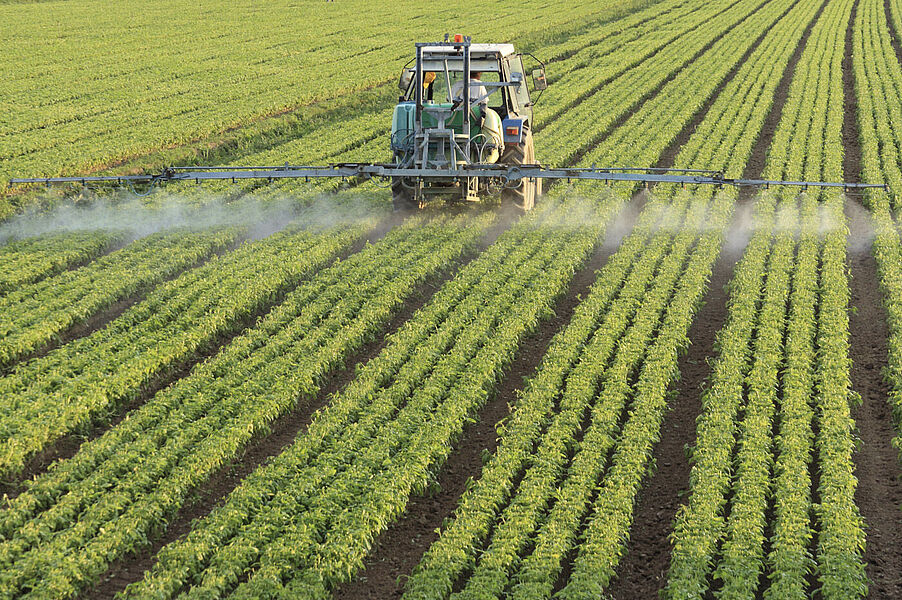Pesticide residues – Focus on recent developments of the PAFF Committee
Our food analysis experts keep an eye on current and future developments in pesticide legislation for you and provide a concise summary here.

In order to be able to recognise changes in European plant protection product legislation at an early stage, it is particularly important to monitor the meetings of the Standing Committee on Plants, Animals, Food and Feed (PAFF Committee) – Section “Herbal Medicines – Pesticide residues”. The PAFF Committee acts as a regulatory committee of the European Commission and supports it in the development of implementing measures and issues opinions. Its members are employees of EU governments and authorities and national experts.
The PAFF Committee meets several times a year and votes, in particular, on projects to amend maximum residue levels for plant protection products in accordance with Regulation (EC) No 396/2005. It also discusses the renewal or non-renewal of authorisations for plant protection products.
The last session was held on 1-2 February 2024. Two amendments were adopted. The maximum residue levels for deltamethrin, metalaxyl, thiabendazole and trifloxystrobin will be both lowered and increased. However, the maximum residue levels for dithianon will only be lowered. The amendments will be valid for six months after publication. In addition, no use options will be granted for products containing dithianon.
In addition, numerous regulations amending maximum residue levels have already been published this year. The following changes deserve special mention:
- Regulation (EU) 2024/331 reduced maximum residue levels for oxamyl, whose authorisation expired in 2023 under implementing Regulation (EU) 2023/741, to the limit of analytical determination – in some cases as low as 0.001 mg/kg. The project was based on a toxicological assessment by the European Food Safety Authority (EFSA). The regulation came into force on 11 February 2024 and applies from 11 May 2024 without granting a grace period. Our WESSLING food analysis experts had already adjusted the limit of quantification for oxamyl in the summer of 2023 to meet the new analytical requirements.
- Regulation (EU) 2024/341 provides for the reduction of maximum residue levels, mostly to the limit of analytical determination, for diethofencarb, fenoxycarb, flutriafol and pencycuron. Their authorisation had already expired in 2021. The regulation came into force on 12/02/2024 and applies from 12/08/2024. A grace period until 12/08/2024 is granted.
- Regulation (EU) 2024/398 regulates the partial increase and for the most part reduction of the maximum residue levels for the active substance haloxyfop, which has not been authorised in the EU since 2020. The regulation came into force on 19/02/2024 and will apply from 19/08/2024 with a grace period.

In order to identify planned changes to EU plant protection product legislation as early as possible, it is also worth keeping an eye on the World Trade Organisation (WTO) SPS notifications. These notifications allow trading partners to assess the trade impact of planned changes as early as possible.
Proposed changes are made available to trading partners as notifications.
If these changes will affect the scope of testing of your products, let us find out together. Our food experts will be happy to assist you and clarify your current requirements with you.
We also offer the following analyses in the field of pesticide residues in food:
- Pesticide residues using the QuEChERS multi-method
- Phenoxyalkanecarboxylic acids after alkaline hydrolysis
- Individual methods for polar plant protection products with the active substances
- Inorganic bromide
- Chlorate and perchlorate
- Chlormequat and mepiquat
- Dithiocarbamates as CS2
- Etephon
- Fosetyl and phosphonic acid
- Glyphosate, glufosinate and AMPA
- Nicotine
- Quaternary ammonium compounds (QAC)
Your contact to our experts for food analysis
- Christina Witt
- +49 2505 89-633
- food@wessling.de

„ If you have questions about developments in pesticide legislation or are interested in our analyses, please feel free to contact me.“



